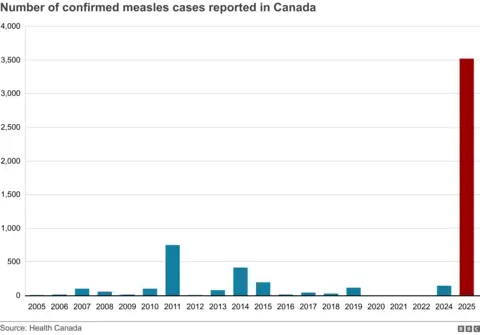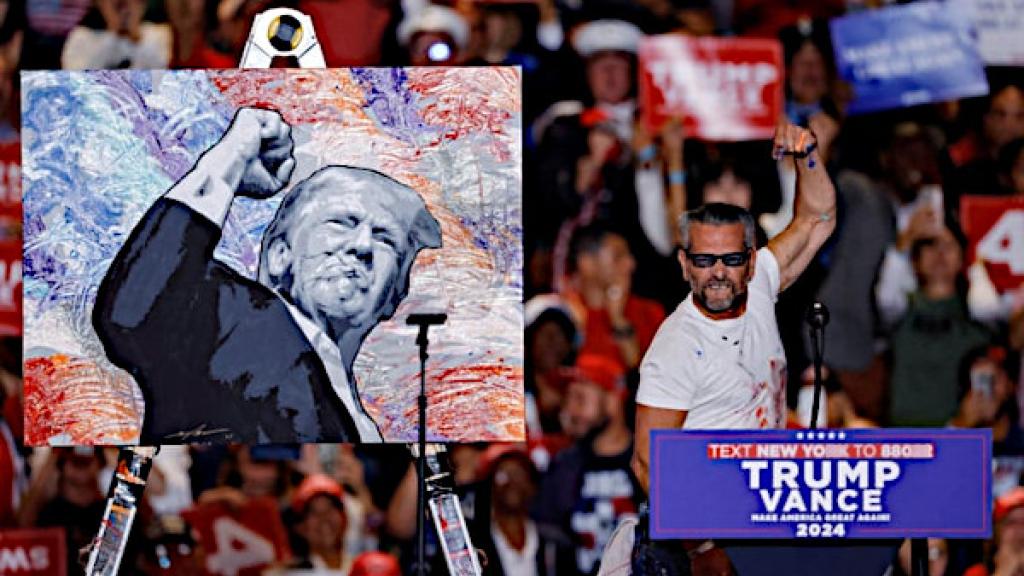Faux Messianism and the Twilight of the West
Civil war isn’t looming — it’s already live-streaming, orchestrated by oligarchs who feed rage while dismantling sovereignty.
For years, independent geopolitical observers, including myself, have warned that the West is veering toward civil war or, at minimum, a prolonged paralysis of governance. This conviction has underpinned my decade-long advocacy for a “Greater Eurasian” autarky, based on the premise that a destabilized West poses the biggest threat to humanity in the near future. Even Donald J. Trump’s tariff mania reflects this reality. It is the desperate last card of a fading empire, signaling that “if we are going down, we’re taking the whole planet with us.”
The root causes of the West’s looming disintegration are too numerous to be enumerated but they include oligarchic funding of far-left and far-right movements, unchecked immigration, erosion of national identities, runaway inflation, deepening poverty, collapsing infrastructure, and engineered corrosion of traditional institutions. This spectacle grows more surreal as the same Western governments are willing to pour hundreds of billions into foreign wars from Ukraine to Israel while turning a blind eye to the critical welfare needs of their own citizens.
Strip away the noise and two primary drivers appear in this drama. First, runaway wealth concentration, where a microscopic oligarchy effectively owns nations as designated proxies of their respective deep states. Second, the obliteration of the political middle ground, leaving no space for rational debate or nuanced critique of the hypocrisies plaguing both left and right.
This Hegelian theme was crystallized by former U.S. President George W. Bush in the wake of the still-contentious September 11, 2001 attacks: “You’re either with us, or you’re with the terrorists.” Since then, the formula has metastasized into “you’re either with the patriots or with the globalists; you’re either with Israel or you’re an anti-Semite” — ad nauseam.
While the two primary drivers explain the root causes of the West’s terminal decline, two cinematic metaphors vividly foreshadow its future, namely The Purge and The Hunger Games.
For the uninitiated, The Purge depicts a near-future America marked annually by a 12-hour orgy of lawlessness where murder is legalized. Marketed as a cathartic “pressure valve,” it is nothing but social Darwinism in its purest form — an elite-orchestrated culling of the poor and marginalized to preserve control and inequality.
The Hunger Games thrusts us into Panem, which literally means “bread” in Latin. Here, a post-apocalyptic dystopia is fractured into twelve subjugated districts ruled by the opulent Capitol. Submission is enforced through annual televised death matches where child tributes are forced to kill or be killed, a spectacle that is equal parts entertainment and grotesque ritual of dominance over starving masses. The imagery is unmistakably reminiscent of ancient Rome’s social control strategy of bread and circuses (panem et circenses) as well as the shedding of blood. Christians being thrown to lions before roaring crowds in the Coliseum is the epitome of this stratagem.
Today, the formula endures in subtler forms via mass mediated spectacles, endless political tirades and the relentless quest for new bogeymen. The herd needs to be kept at “peak rage” while their overlords plot their demise.
Combustible Ironies
The West has been smouldering for years, but the recent deaths of American podcaster Charlie Kirk and Ukrainian immigrant Iryna Zarutska — alongside a wave of far-right rallies from the United States to the United Kingdom to Australia — have thrown fresh accelerants onto an already raging fire.
In London, 110,000 flag-waving zealots chanted “Unite the Kingdom” as they torched effigies and brawled with police when they were not feasting on onion bhajis and samosas hawked by South Asian immigrants. The ghost of Kirk turbocharged this crowd who canonized him like a fallen messiah. U.S. Congressman Troy Nehls even declared that if Kirk had “lived in Biblical times, he’d have been the 13th disciple.” Yes, and I suspect that if that were the case, Judas would have never betrayed his Lord as the 13th member would have performed the deed.
Another catalyst in this religion-tinged drama was Zarutska, who was knifed to death on a North Carolina train, with her American Dream bleeding out thanks to a random, hate-motivated assault.
For some perspective, consider these inconvenient questions: Wouldn’t Zarutska be safer in Moscow or Nizhny Novgorod? Since the protracted conflict began in 2022, how many Ukrainians have been knifed to death on Russian soil compared to the supposed sanctuary of the West?
With Kirk’s death hoisted as a lightning rod at uber-patriotic rallies, one thing is certain — civil war may not be merely looming; it is already being live-streamed on X. Adding fuel to the fire, Elon Musk himself fanned Britain’s right-wing fury with a blunt warning: “Whether you choose violence or not, violence is coming to you. You either fight back or you die, that’s the truth, I think.”
That is right. Let’s take law and order into our own hands to settle grievances, just as Charlie Kirk’s alleged assassin did!
Make no mistake: it is not the pitchfork peasants who are driving this farce, but oligarchs pulling strings from their tax-haven bunkers. Can anyone seriously imagine Musk leading a personal charge against left-wing radicals in the streets of London or Sydney? What commonality does Musk share with the street rabble? This guy has rubbed shoulders with far-left politicians and oligarchs at technocratic assemblies such as the World Economic Forum. And now, he is their Christ-first messiah?
I wonder if the governments of the United Kingdom, the European Union, or Australia would charge Musk for inciting violence. I seriously doubt it. They will posture, perhaps wag a finger, but they will not act as these same governments are dependent on the very platforms, capital flows, and technologies that men like Musk control. To challenge him is to risk severing their lifelines.
Coronapsychosis Reality Check
The herd, as I have noted in a recent interview, is senseless, gullible and hopelessly amnesiac. They have always worshipped hierarchy and will follow any leader who can peddle dangerous delusions. The outrage manifested across the Western world today is routinely calibrated like a pressure valve.
Just where were these self-proclaimed patriots and “Christian Nationalists” when Western security forces were punching, pummeling, and arresting ordinary citizens who dared oppose senseless lockdowns and mandates during the pandemic? Remember the time when even a Facebook post or “like” — contrary to the Ministry of Truth’s narrative on the pandemic — landed you in handcuffs? Even pregnant women with little children were not spared.
Where were they when churches were padlocked under the virus mania? Who coerced a hesitant populace into taking experimental mRNA vaccines? How many have died prematurely since taking the shots? And who continues to bury the data on side effects to this very day? If there was ever a cause worth rallying for, this is it. As someone who has suffered from a past vaccine injury, I would far rather see answers to these questions than salacious exposes over Brigitte Macron’s alleged gender.
But that’s what the multi-millionaire berserkers on the left and right are paid to do: to distract you from asking questions like these. And what have they really achieved? The Jeffrey Epstein files are now reduced to a nothingburger, with both left and right blaming each other for concocting them.
The “coronapsychosis” therefore was not an aberration but a rehearsal. The lockdowns, the mandates, the mediated fear porn were all meant to test how far the sheeple could be controlled, divided, and pacified under a fog of crisis. What follows now is merely the sequel, a post-pandemic purge within nations.
Rage is only permitted when it serves power. When truckers occupied Ottawa, they were smeared as terrorists. When parents questioned school closures or Drag Queen story hours, they were branded extremists. Yet now, like starved hogs suddenly released from their pens, the “patriots” are free to unleash their fury — so long as it is aimed at the bogeymen of the day, handpicked and curated by their masters.
‘Christ is King’?
As for those feverishly chanting “Christ is King” while waving Israeli flags, I would question their knowledge of the Bible. The flag itself features the so-called Star of David — a hexagram composed of six points, six triangles, and six sides within its inner structure. I hardly need to remind the reader what three sixes signify in Christian tradition. And when it comes to nationalism, what did Christ Himself say to the representative of the empire in His day? Simply this: “My kingdom is not of this world” (John 18:36).
I doubt the emotionally-charged “Christ is King” herd could even identify a Bible, let alone find that verse. And if they did, they might be startled to realize that the very flag they idolize would, for other theological reasons, be an anathema to the faith they so casually invoke. They should also research who is weaponizing Muslim immigrants as the “broom of the West.”
These mobs need to pick a lane. Either they call for a return to traditional national values and identity — a perfectly legitimate aspiration — or they should renounce their citizenship and openly fight for the Zionist cause. But when they howl about split immigrant loyalties while simultaneously pledging allegiance to a foreign power, it smacks of clinical schizophrenia.
Dark Days Ahead
The nationalist rage erupting across the West is not hypocrisy born out of desperation; it is a deliberate top-down strategy.
Manufactured chaos is the last resort of a civilization in decline. By stoking fury against immigrants, minorities, and phantom enemies, elites divert scrutiny from themselves. Every rally, every clash, and every viral slogan functions as a pressure valve, ensuring the masses expend their fury on each other rather than uniting against their taskmasters.
But what happens when the riots spiral beyond control? Martial law is one obvious outcome, but it cannot endure without new scapegoats. That is why a steady diet of demonized villains — Russia, China, Iran and to some extent, India — must be sustained through a carousel of manufactured crises and false-flag spectacles.
For the BRICS nations, the warning is clear. They must insulate themselves from the West’s unraveling by fortifying supply chains, diversifying trade grids, and cultivating self-sufficiency. Continuity in the face of chaos will be their greatest weapon in the dark days ahead.
Charlie Kirk Becomes Alive
On Wednesday, September 10, a shot was fired at a Utah college event, and Charlie Kirk became alive. Relatively unknown to the public outside of the Right Wing fringe that gains shekels and adoration from the misinformed, miscalculating, and mistaken cadre of misplaced Americans, Charlie Kirk became a household name; more than that, Charlie Kirk achieved immortality. Flags at half-mast, Medal of Freedom, statues planned, all for a young man who used the principles of establishing megachurches and planting their orators and turned college campuses into megacampuses, with him as the orator.
Don’t intend to demean his life and ridicule his death. I perceived Charlie Kirk to be a charlatan, who twisted facts and reality to pursue an agenda that suited his pocket, who deserved condemnation, and maybe a few years in purgatory, but did not deserve a fatal bullet that silenced his rhetoric and amplified his message. His family members merit regrets for the act and sympathies for their loss.
Objectives that Charlie Kirk’s divisive rhetoric intended to achieve in life — cancel the Woke and disable the Left — have found their yellow brick road, and the Trump administration is set to stroll down that road, with the help of the jingoist and sanguine media. All reports I have read categorize the killing as a political act and predict “tit for tat” killings leading to a possible civil war. Trump’s initial response urges that to happen. To the question, “How do we fix this country? How do we come back together?” the US president replied, “I tell you something that is going to get me in trouble, but I couldn’t care less. The radicals on the right are radical because they don’t want to see crime … The radicals on the left are the problem – and they are vicious and horrible and politically savvy. They want men in women’s sports, they want transgender for everyone, they want open borders. The worst thing that happened to this country.”
At this September 15 writing, I find no evidence that the alleged assassin, Tyler Robinson, had any political motivation in the killing. Recitations of “the frightening rise in political violence in the United States,” (what is new in violent America?) hides and distracts from the frightening rise in dangerous and hysterical political discourse. Motivation in the killing of Charlie Kirk leans to a personal grudge in a personal situation — Kirk had disturbed Robinson, who had an intimate relationship with another male who was trans gendering to female. An extreme reaction, but disturb the disturbed and the outcome is often extremely disturbing — murdering the lawyer in a divorce case, murdering a judge after harm by a verdict, murdering a swindler who caused grief to others. Motivation in this case has not been defined, so why eagerly insinuate a political motive that is certain to cause havoc and arouse the public? Why not be calm and favor a motive that is more plausible, prevents havoc, and calms the public?
Not one voice for peace and order; megaphones for violence and disorder; the way of those who lead our society. If Harry Truman and his Democratic Party had not approved United Nations Resolution 181 for political reasons, there would be no Israel and no genocide of the Palestinian people; if the leaders of the Democratic Party had nominated sure winner, Joe Biden, instead of friend and sure loser, Hillary Clinton, there would no Donald Trump in the presidency; if the Democratic Party had not soothed Joe Biden’s feelings and realized their commitment to the American public by allowing more reliable candidates to enter the race at an earlier date, there would have been no return of Donald Trump and changing of the presidency to ruling autocracy. These small thoughts of personal gain engineered huge losses for the world.
Keeping Charlie Kirk alive advances ignorance and violence in the 50 states. The idolized man pedaled half-truths, clichés, and simplified arguments to a simplified audience who could not engage in an erudite dialogue and espoused clichés. He found a niche with college Republicans who were clipped by more outspoken students. To his credit as a political organizer, he gathered Republican college students into a more meaningful political force and accomplished much for the Republican Party, but successful political organizers do not warrant the accolades he is receiving and the future monuments that are being designated for him, especially when the efforts have been self-serving.
Kirk was not proceeding well until “he and others adopted a more edgy and confrontational style of engagement, [and] people started paying attention, including deep-pocketed donors and political strategists.” Kirk learned that deceit and Faustian bargains are a route to successful politics and living a comfortable life. The Trump administration has greatly lowered the bar on what is determined to be greatness.
Jesus Christ’s described life was similar to most apocalyptic preachers. Death and resurrection gave him fame. So it is with Charlie Kirk, but doubtful that it will be as long lasting. In with a blast and out with a whimper. One advice to his family ─ if they want him to be properly remembered, they will inform the Israeli authorities not to proceed with canonizing him by having a street named for him in the city of Netanya, a mural painted in Ashdod, and a missile inscribed “In memory of Charlie Kirk.” Identifying him with the genocidal Israelis will change his remembrance from the sweet “accomplishments in the political firmament, “ to an aggravating “enemy of mankind.”







 Morgan Birch
Morgan Birch




